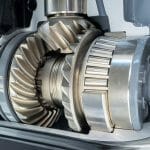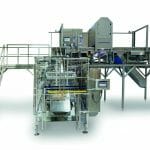~ Why OEMs need to consider the power needs of modern service robots ~
Since industrial six-axis robots were popularised back in the 1960s, the technology that makes up robots, as well as the way in which we now use robots, has changed considerably. Here, Jonathan Wilkins, marketing director at obsolete equipment supplier EU Automation, argues that the way we power these new devices needs to be reassessed to meet the needs of new applications such as autonomous mobile robots (AMRs).
What was once considered a high-risk sector, where robots were relegated to operating in cells and cages behind no-go zones, has changed to one where robots can now work in collaboration with human workers.
Advances in motor technology, actuation, gearing, proximity sensing and artificial intelligence has resulted in the advent of various robots, such as CoBots, that are portable enough to be desktop mounted, as well as autonomous mobile robots (AMRs) that can move freely around a facility.
These systems are not only capable of delivering high payloads weighing hundreds of kilograms, but are also sensitive enough to sense the presence of a human being at distances ranging from a few millimetres to a few metres. The robot can then respond in under a millisecond to stimuli, such as a person reaching out to guide the robot’s hand, and automatically change its power and force-limiting system to respond accordingly.
Although six-axis robots and CoBots are predominantly mains powered, portable AMR service robots are gaining popularity in sectors as diverse as industrial manufacturing, warehousing, healthcare and even hotels. In these settings, they can operate 24/7, only taking themselves out of action for charging and taken offline by an engineer for essential repairs and maintenance.
In the warehousing sector, for example, the picking and packing process can be manually intensive, with operators walking up and down long aisles picking products from a shelf to fulfil each order. This is a time consuming and inefficient process that adds time to the customer order. Using an autonomous mobile robot in this situation can allow the compact robot to pick up the shelf and move it to the human operator in true “goods-to-man” style.
However, this demanding use-cycle prompts the question: are the batteries that power these robots sufficiently suited to this new environment? To answer this, we need to understand the types of batteries used.
The two most popular types of secondary, rechargeable, battery are sealed lead acid (SLA) and lithium-ion (li-ion). Having been around for nearly 160 years, lead acid technology is capable of delivering high surge currents due to its low impedance. However, this type of battery can be large and heavy, making it impractical for smaller machines.
Alternatively, lithium-ion provides the highest density and delivers the highest energy-to-weight ratio of any battery chemistry, which allows design engineers to use it in even the most compact devices. It also maintains a stable voltage throughout its discharge cycle, resulting in highly efficient, long runtimes.
When choosing robotic systems for their application, it’s important that engineers match the right type of battery to the load. As we increasingly begin to rely on smart factories with high levels of portable and mobile automation, considering the power needs of each device will be vital in delivering long run times with high efficiency.







